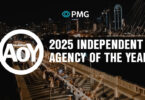To me, one of the best things about social media is the opportunity to be in front of customers each and every day. By following you, they are literally giving you permission to consistently interact with them and provide another page in your brand story.
But for many B2B brands, their social media program is underdeveloped and even, shall we say, socially awkward. For the most part, it’s lack of experience with the media—not just by marketing, but perhaps by the whole organization—where the problem starts. And that lack of understanding turns into lack of commitment. And lack of commitment becomes complacency.
So the question is, how committed is your B2B brand to social marketing? It’s easy to find many B2C brands who truly embrace the power of social media. But it seems to drop off significantly when looking at B2B. Why is that?
“Social media is just a buzzword until you come up with a plan.”
— Felicia Lin, Taiwanese American Writer
Social media is actually the #2 most successful tactic for B2B marketers behind only SEO, according to Sprout Social. And Datareportal found users spend an average of nearly 2½ hours using social media each day. So done right, social media can be an incredibly effective B2B marketer too.
Another thing that’s great about social media is that it can be activated quicker than most any other forms of advertising. As we bring brands into the agency, social media is often one of the first things we implement for a brand refresh or rollout.
Knowing how to use social media is not the same thing as knowing how to use social media as a marketing tool for your business. So, what are some signs that there may be some awkward tendencies in a B2B brand’s social media? Here are 10 things that instantly tell us that a brand is in need of some serious social love.
1. No engagement
Our first step is to look at the engagement a B2B brand is receiving in relation to its total number of followers. So, what is engagement? Social media engagement is the measure of comments, likes, and shares received as a result of your posting. Quite literally, it is your audience telling you what they think, or don’t think, about your content. It’s shocking how often we see B2B brands with tens of thousands of followers, yet engagement you can count on one hand. Equally shocking is how long the trend has likely been occurring, and yet no one sounded the alarm that there might be an opportunity for improvement.
All brands want to rack up a ton of followers. But ultimately, the greatest measure of social media success is an engaged audience, not just a big one. Engagement is proof that you’re building a positive brand experience, and developing meaningful relationships with new and potential future customers. And as a B2B marketer, you can’t really say you know your customers if you’re not getting the affirmation of their engagement.
“A lot of people use social media to share mundane things or for self-glorification. I try to use it to share interesting things with people.”
— Ashton Kutcher, Actor and Entrepreneur
2. Inconsistent posting
When it comes to content, it’s quality, not just quantity, that you should be striving for. But there still needs to be some level of quantity to posting. It’s not unusual to see a B2B brand post, then several weeks or even months pass before their next post. It’s a clear sign that the brand is not working with a content calendar that is planned out in advance. And it’s also a sign that no one in marketing is truly owning, or at least prioritizing, social media.
A content calendar for the month should really be planned at least 30 days in advance so you can get a holistic view of how individual posts interact with other content. It also ensures you have a drumbeat of content to keep followers engaged with the brand.
According to HubSpot’s State of Marketing 2022, out of 3,400 marketers surveyed, the majority of them post between one and six times per week. As we introduce B2B brands to social media, we start with consistently posting at least two times per week with quality content and then growing from there.
3. One-dimensional content
When you think about your friends, those who you are closest to are generally those who you have lots of things in common with. And those who only talk about themselves are those you typically become less and less friendly with. The same can be said for brands. Without a mindset focused on customer engagement, it’s easy for B2B brands to create content that’s all about them. The idea is to develop several channels of content that speak with your customer rationally and emotionally. After all, Sprout Social found that 45% of customers unfollow a brand because of irrelevant content.
4. Wrong brand voice
Brand voice is the distinct personality a brand takes on in its communications. The tone for social media can definitely have more of a customer relations vibe than a print ad might. In essence, it can sound more human. But it should still be professional and align with your overall brand voice. We unfortunately find that with many B2B brands, social media takes on an entirely different voice, one that tends to be far younger and less sophisticated than what the brand portrays in its other marketing communications. On the other hand, it can also be robotic or confusing because of non-marketing influences within an organization (ahem … legal).
The strongest brands are those that have the most consistency from touchpoint to touchpoint. So ensure the voice is consistent across all channels.
5. Too wordy
Albert Einstein once said, “If you can’t explain it, you don’t understand it well enough.” Social posts that are too long are generally the result of lack of understanding, and the inability to be single-minded. When social content is too long, you alienate a great portion of your followers right off the bat.
So edit thyself. Posts should be short and sweet, as shorter posts receive more engagement. In fact, Facebook posts with 80 characters or less receive 88% more engagement. Recommended character counts for Facebook are between 30 and 80 characters, Twitter is 71 to 100, LinkedIn 50 to 100, and Instagram 138 to 150. As our general rule of thumb, we try to limit content to one sentence, or two at the most, if edited down.
6. Liking your own posts
Engagement should come from your customers and employees, not you. An obvious sign that a brand is struggling with engagement is when the marketing manager in charge of social is the first—and sometimes the only—person to like the post. And worse than that is when the social media manager does not realize they are, in fact, liking the post as the brand, not themselves. There’s nothing funnier, or more uncomfortable, than seeing your feed read, “Spire Agency likes a post from Spire Agency.” In both circumstances, it comes across to a follower that you are patting yourself on the back. It also signifies there is not enough of a follower base to create the real engagement your brand needs.
7. Not measuring or monitoring
Social media is magical for marketers because of the real-time analytics. We’re able to learn tons about our B2B buyers by looking at insights like engagement numbers, demographics, and interest categories. But when we ask questions about the numbers, it seems many B2B marketers are not looking at the data at all. Having a social content calendar is nice. But measuring and evaluating the effectiveness of that content is the big “a-ha!” that social media brings to the marketing mix.
As mentioned earlier, you have to recognize that when you are receiving little engagement, there is a problem. Looking at each post and seeing what performs best (and what underperforms) is all a part of learning your customer. So brands must have a monthly recap report that looks at the effectiveness of their content and spend.
But don’t forget to look at your competition, too. As we do an initial social media evaluation for a brand, we look at followers and engagement of competitors and how it stacks up to our brand. There is nothing more terrifying for a brand manager than when we show them how a competitor is schooling them in engagement. But there is also nothing more optimistic than showing them that their competitors are not much better, and with a stronger social strategy from Spire they can truly own their industry’s social space.
“The social media landscape changes incredibly fast, so you have to be open-minded and nimble to keep up with it.”
— Alexis Ohanian, Reddit Co-Founder
8. Not spending
For the longest time, brands fell in love with social media because they saw it as “free advertising.” And while organic social, meaning unpaid content, has its place, the truth is that social media is paid media. It’s no secret that most social platforms operate on a pay-to-play model for brands.
Without boosting content, you simply will not have enough eyeballs on your content. And without viewers, you should not expect to have any type of sizeable engagement. Hootsuite found that the average reach of an organic post on a Facebook Page hovers around 5.20%. That means roughly one in every 19 fans sees the page’s non-promoted content. In our agency experience, that number is actually quite a bit less.
It’s sometimes quite depressing to see just how few people see a B2B brand’s posts. And it’s even more heartbreaking when we present these facts to a new client. Without a boosted-ad budget, and a follower campaign soon after, you simply cannot make social media effective for your brand fast enough.
9. Single platform
In assessing brands, we look at their activity across all social platforms. It’s not uncommon to see a B2B brand only utilizing one or two social platforms. When asked why they alienate the others, the answer is oftentimes, “We like to focus on these few exclusively.” The problem is, we don’t hear the word “customer” in that answer.
It sounds strange, but buyers are humans as well. They have a work life, as well as a personal life. And they use an average of 6.6 different social media platforms each month according to Datareportal. As B2B brands, we don’t know what social platform our customers are using when we post our content. So ensure your content is spread among multiple platforms to intersect with buyers where they are, not where you hope they’ll be. The process of elimination may eliminate a sale. That’s why we lean into Facebook, LinkedIn, Twitter, and Instagram as a starting point for all our B2B brands.
10. Exclamation marks
When it comes to B2B voice, our team functions under the social directive of “You get one exclamation mark a month … and it’s only in case of emergency.” An excessive use of exclamation marks generally signifies discomfort in writing by the content creator. They either don’t have anything impactful to say so they fill it with exclamation marks, or they don’t understand the brand voice. This simple punctuation mark generally symbolizes unbridled enthusiasm or just plain yelling. B2B brands should not be either.
Social media has been around since 1997. But even after 25 years of it, we’re all still learning every day. So, while algorithms and back-end measurement seem to change weekly with Facebook and others, you’ll want to ensure the foundational part of your social media program is working the best it can, so your brand isn’t the one in your industry that’s socially awkward.
Mike Stopper is Executive Vice President of Client Service and Planning at Spire. In addition to being an award-winning social marketer, he is also AAF Dallas’ most-awarded account director for the last eight years.
original content








